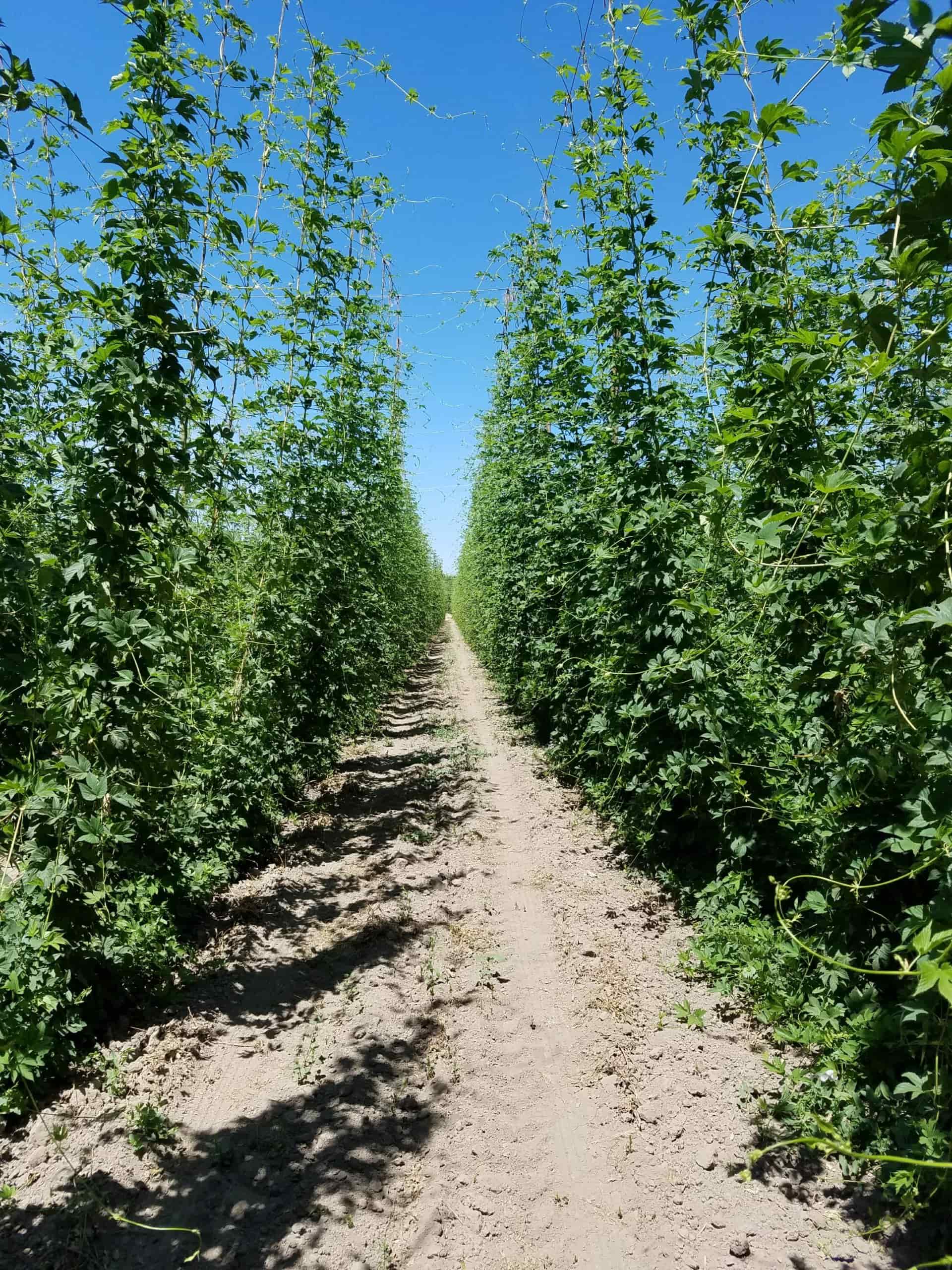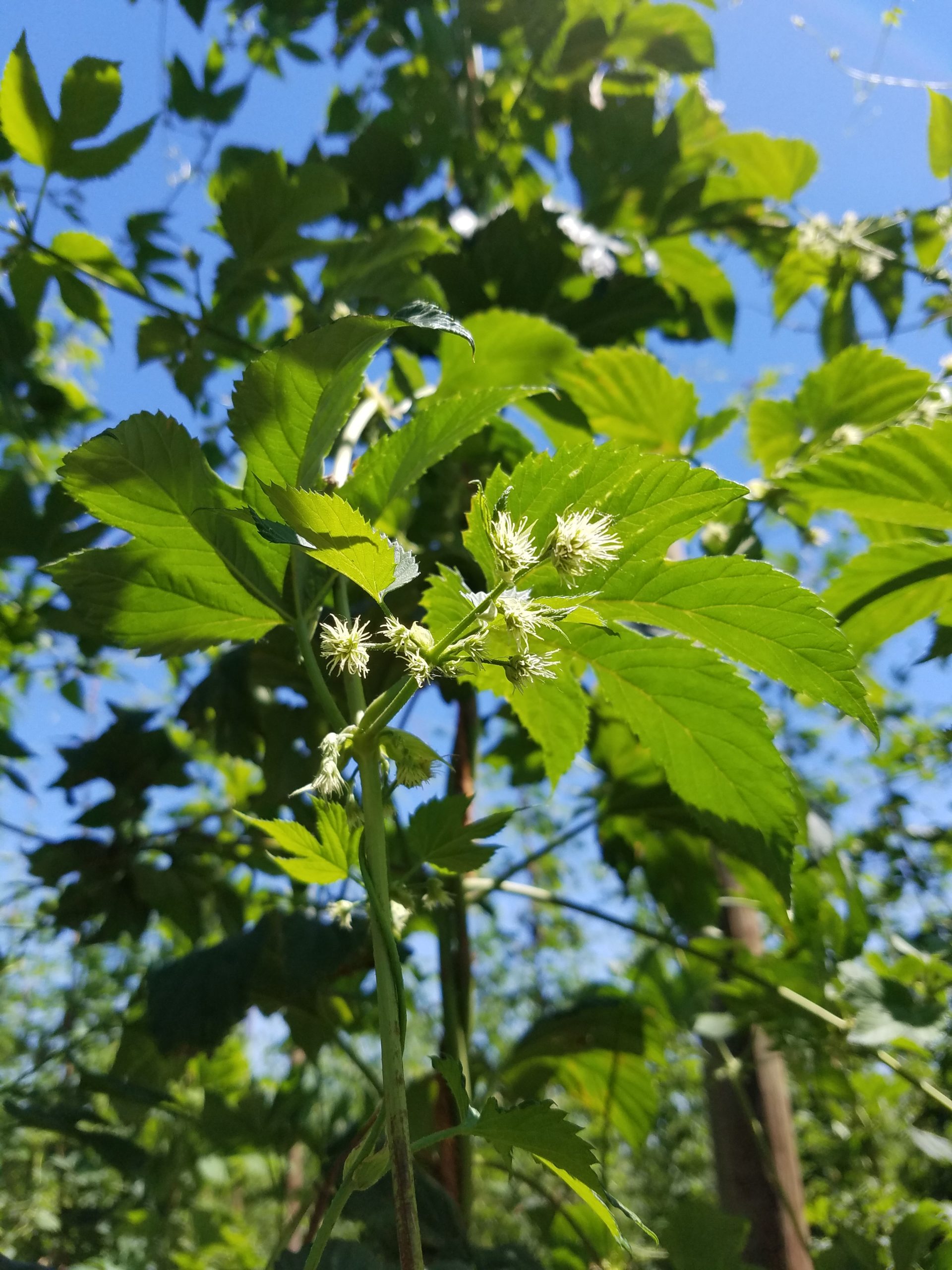Hop Crop Report from BSG Hops

The Yakima-based staff of BSG Hops works closely with growers throughout the year to ensure we receive the highest-quality hops at harvest. Here’s a dispatch from the fields with a look at the progress of the 2017 crop:
Variety: El Dorado
Training Date: May 25th
Growth Phase: Vegetative/reproductive
Hops are a perennial rooted planted with annual above ground growth, so in March the root system starts to push new shoots that emerge through the soil surface. The growers then prune back the shoots to get the growth timing just right. When there is enough new growth the hops are trained. The training date is very critical and varies depending on the variety. The training date is important because if you train to early you run the risk of early bloom. This can lead to inconsistent maturity at harvest. If you train too late you run the risk of not maximizing yield. Training starts in the Yakima Valley in late April/early May and concludes by the end of May.
The El Dorado field shown here was trained on May 25th. Between the time of my pictures below and the training date 36 days had passed. It is now June 30th and most of the hop bines have climbed the 18’ trellis. Hops are phototropic (light) and thigmotropic (touch), so this causes them plant to climb the twine in a clockwise formation as they follow the sun.
The plant grows vegetatively with longer day length, so when the summer solstice came around (June 21st) and the days get shorter, the plant is triggered to start growing reproductively. This doesn’t mean that all vegetative growth has stopped though; the plant will now produce lateral bines through the month of July. The lateral bines are where the cones will form. At this time, there are only a few plants with any bloom. The blooms on a hop plant are referred to as burrs and they are pictured below.

Note on field work: the growers are currently irrigating and fertilizing frequently. They have been fighting some powdery mildew pressure and aphid presence to this point and have field crews scouting every week to determine when treatment is necessary. Spider mite populations are starting to increase with increased temperatures.